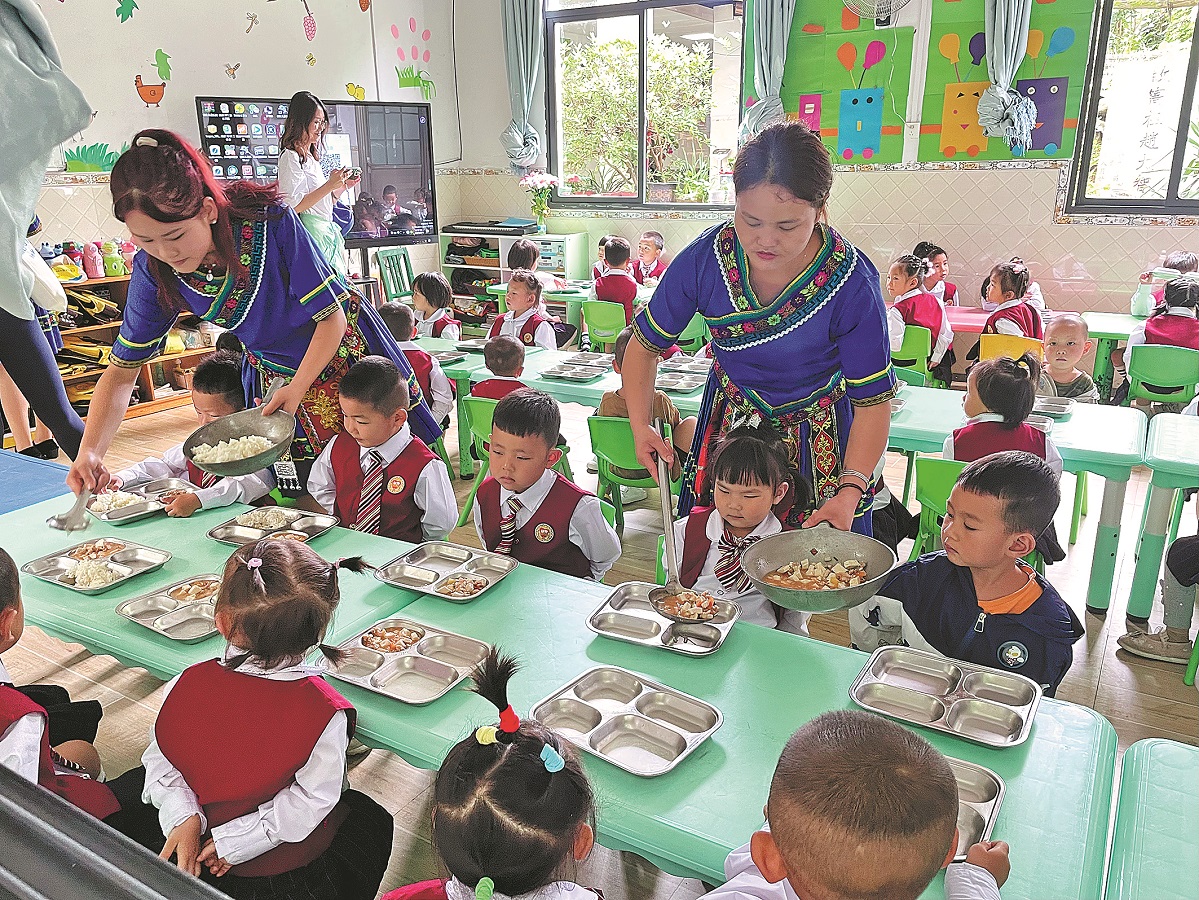

Balanced diet
It takes a lot of effort to balance the children's nutritional needs, with just the 4-yuan subsidy and locally available ingredients, said Wu Feng'e, a professor of early childhood education at the college and the main designer of the preschool menu.
Chinese Dietary Guidelines recommend eating seafood at least twice a week. But in inland Xiangxi, fish and shrimp are hard to come by and costly. To ensure the kids get enough calcium, Wu adds soy products like tofu to their lunches every day. She also substitutes refined rice and flour with whole grains to cut sugar intake from carbohydrates.
Initially, these measures faced skepticism. Some rural parents didn't understand why their children were eating cheaper whole grains that no one bothered with in the countryside, believing refined rice and flour were better. Some kindergarten teachers even asked if eating tofu daily might cause kidney stones.
To ensure accurate meal servings, Wu buys the ingredients, cooks them at home, weighs them, and distributes child-size portions on a plate. This attention to detail helps her easily spot when kindergartens try to cut corners. If meals don't meet the standards, she tags the headmaster in a WeChat group shared with local government officials, and requests corrections.
Preschools in the program also have to upload 10 photos a day of the meals and children eating them to the School Nutrition Improvement Initiative platform. Managed by the China Development Research Foundation, and initiated by the State Council's Development Research Center, this system ensures that meal standards are consistently met through close supervision.
These efforts have drawn some parents like Xiang Hongxia to bring her 3-year-old daughter back from the county school to the rural kindergarten for the better meals.
"I want her to grow tall, be healthy, and enjoy a happy childhood," Xiang said. The young mother added that moving back home saved the family rent and living costs, and also allowed them to care for elderly relatives.